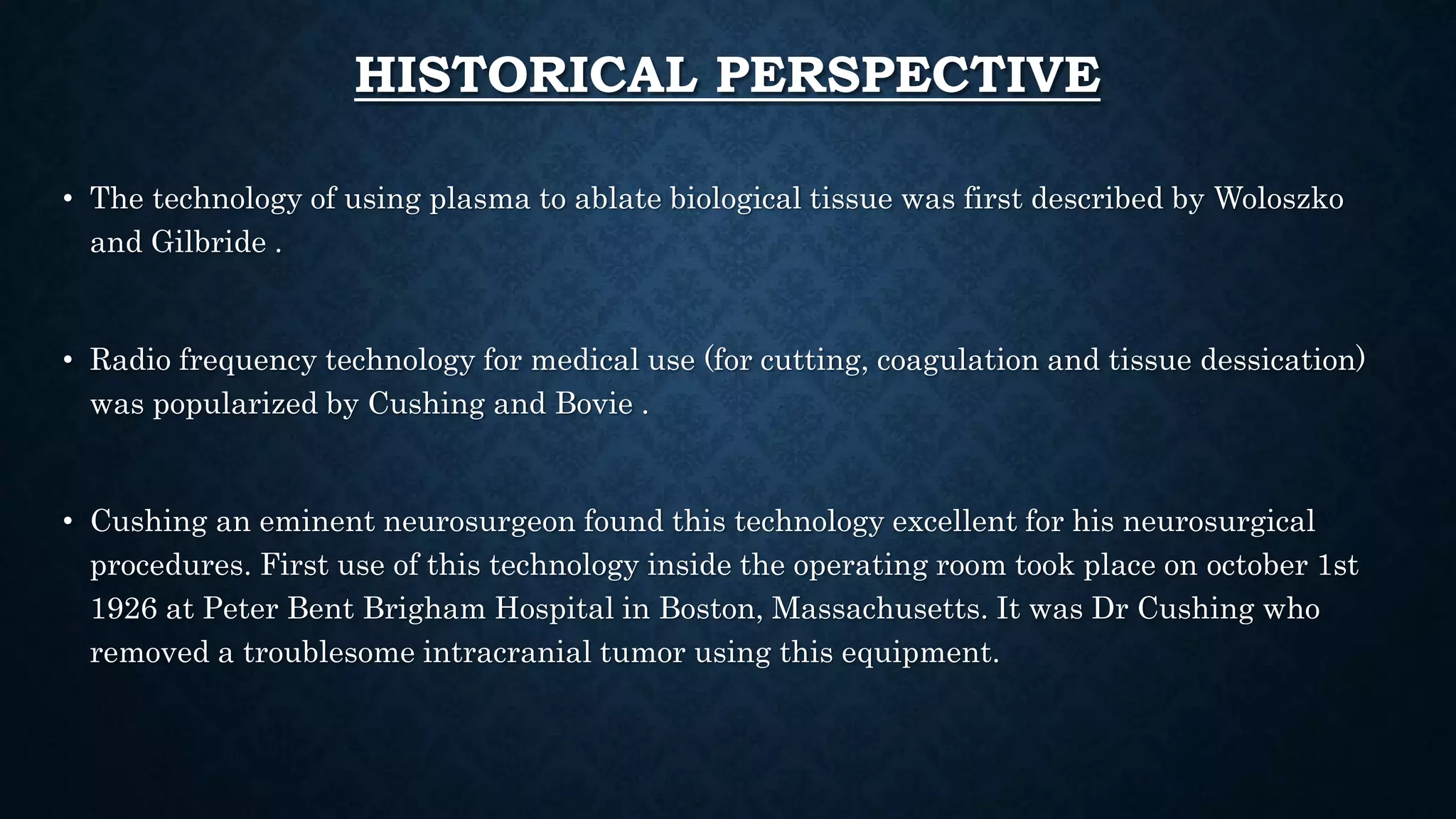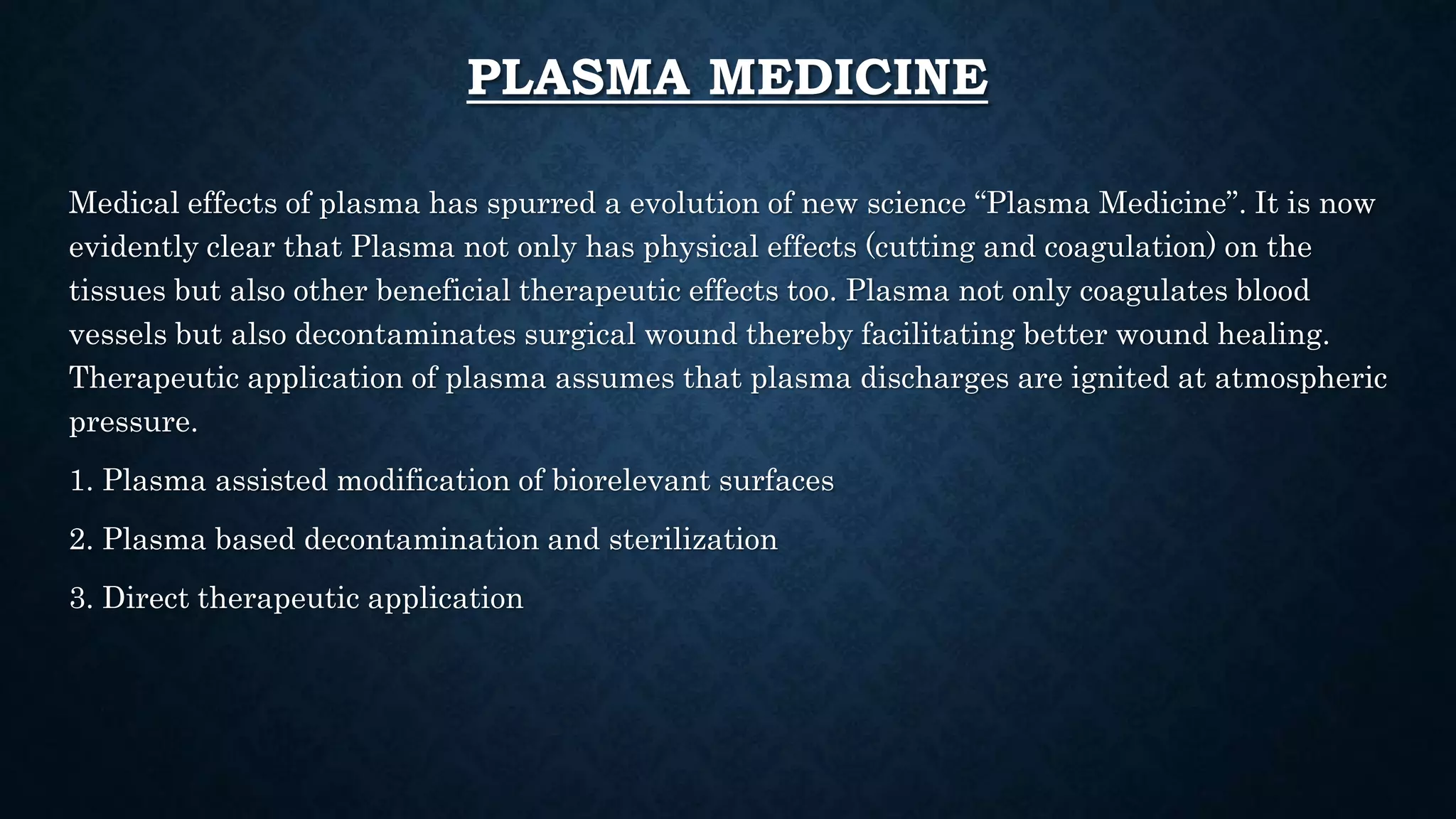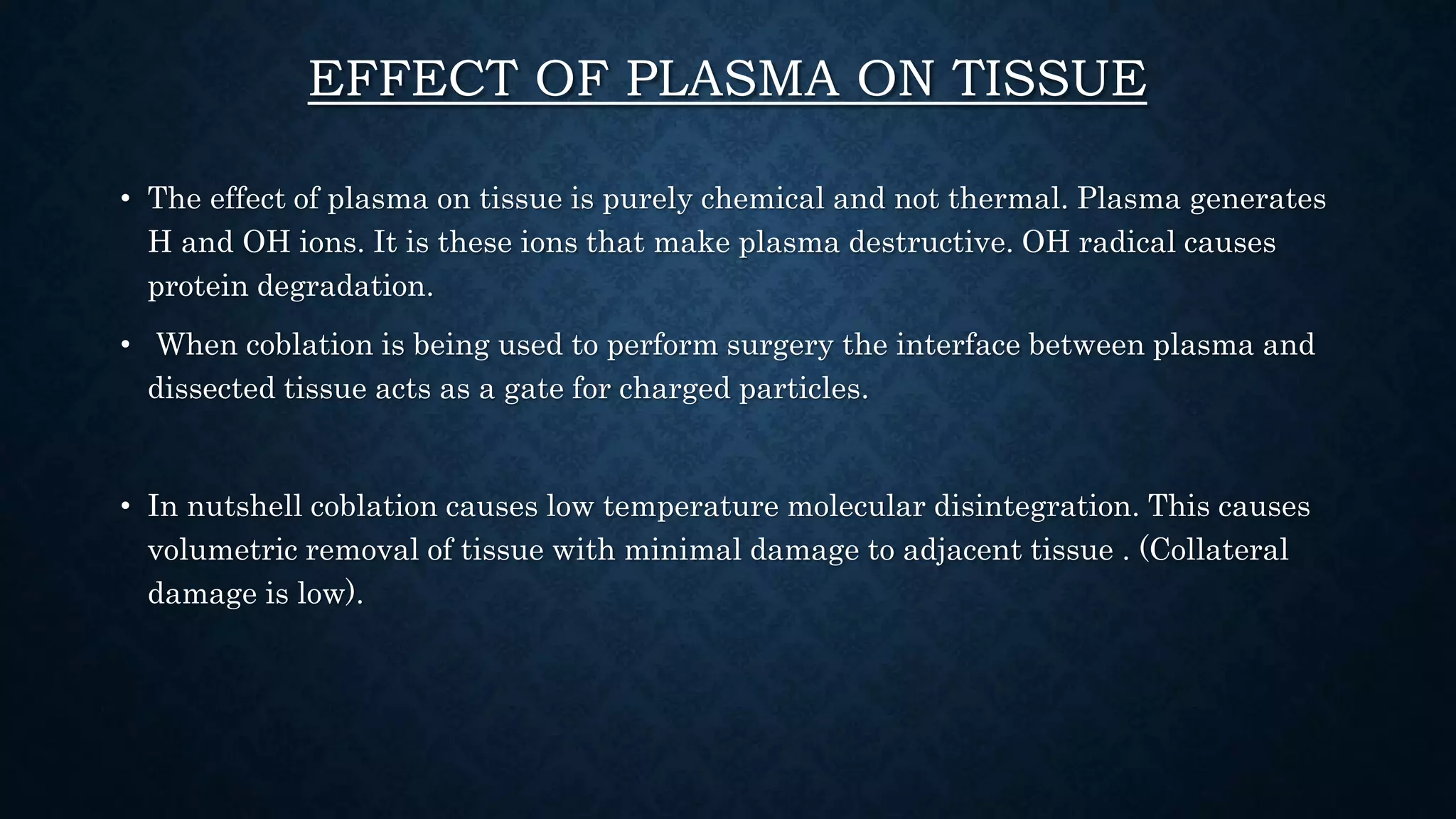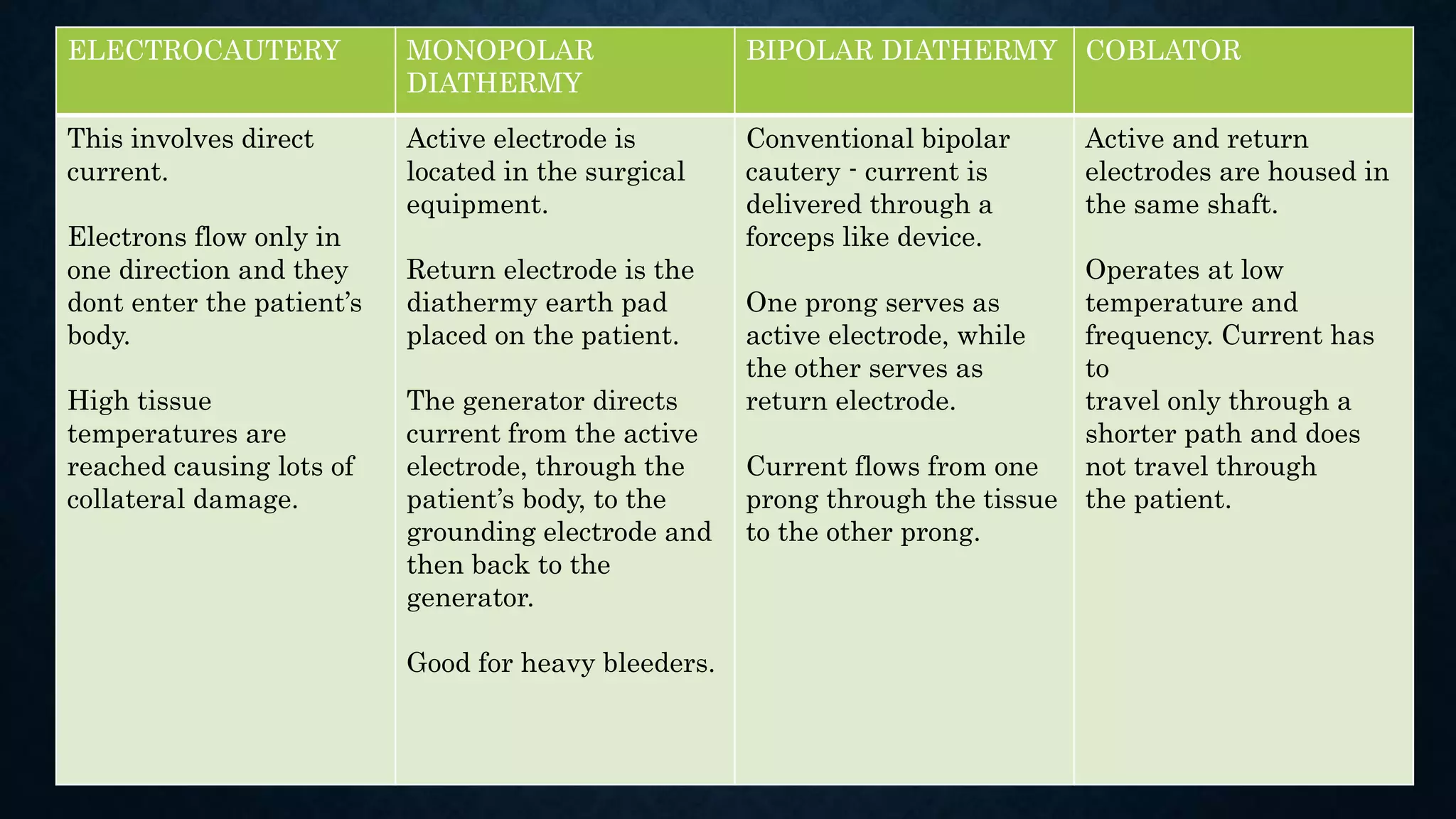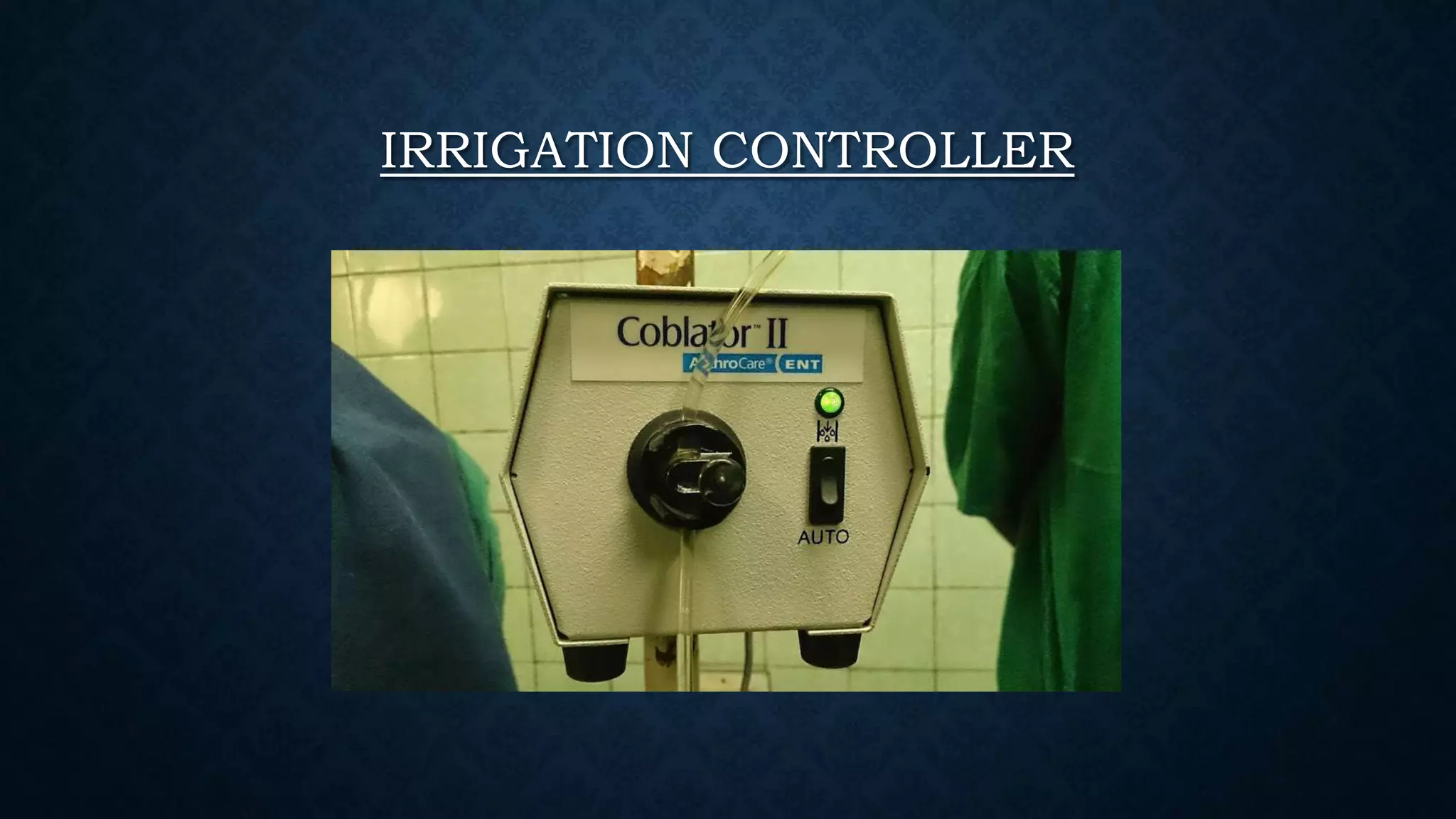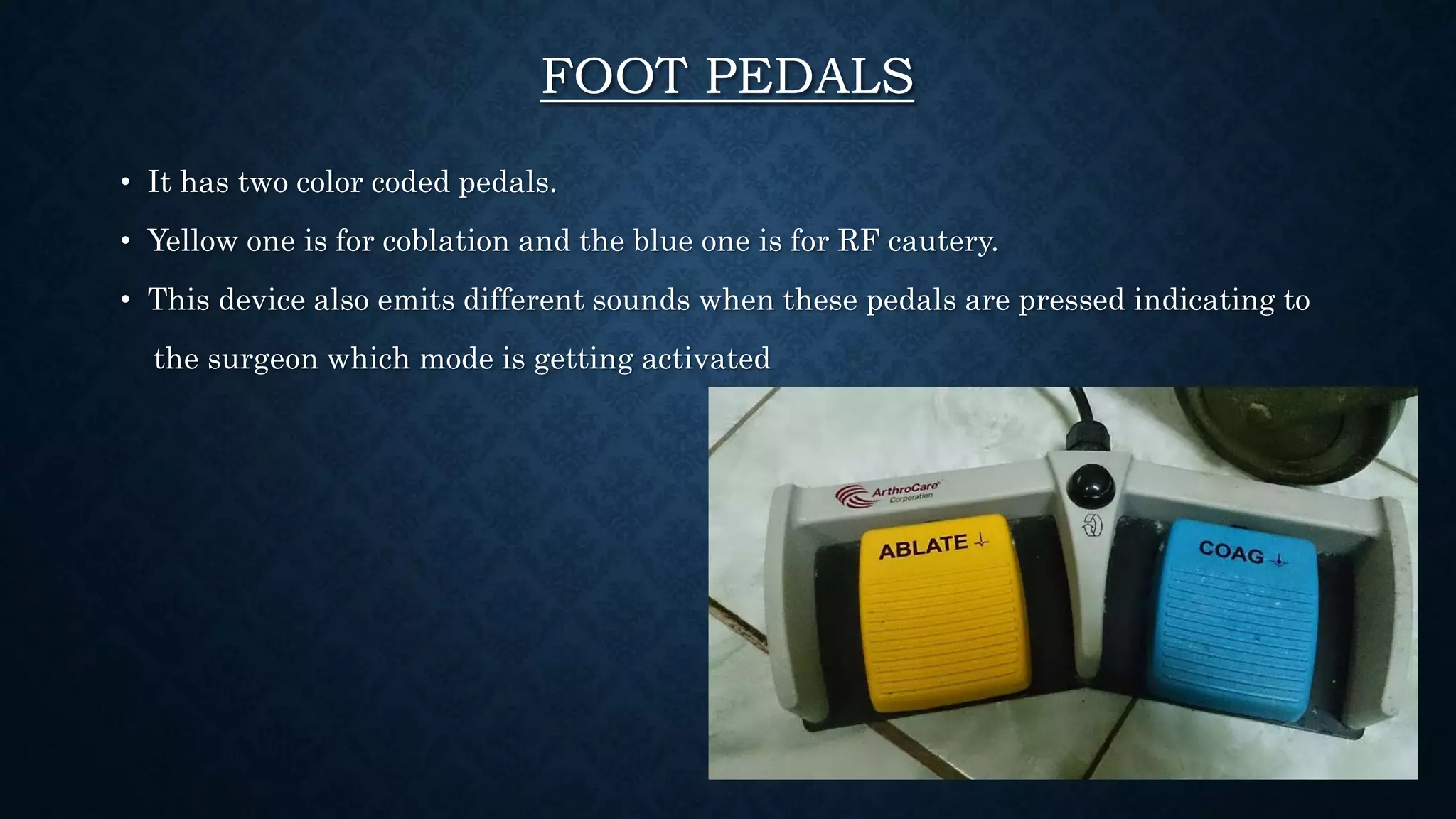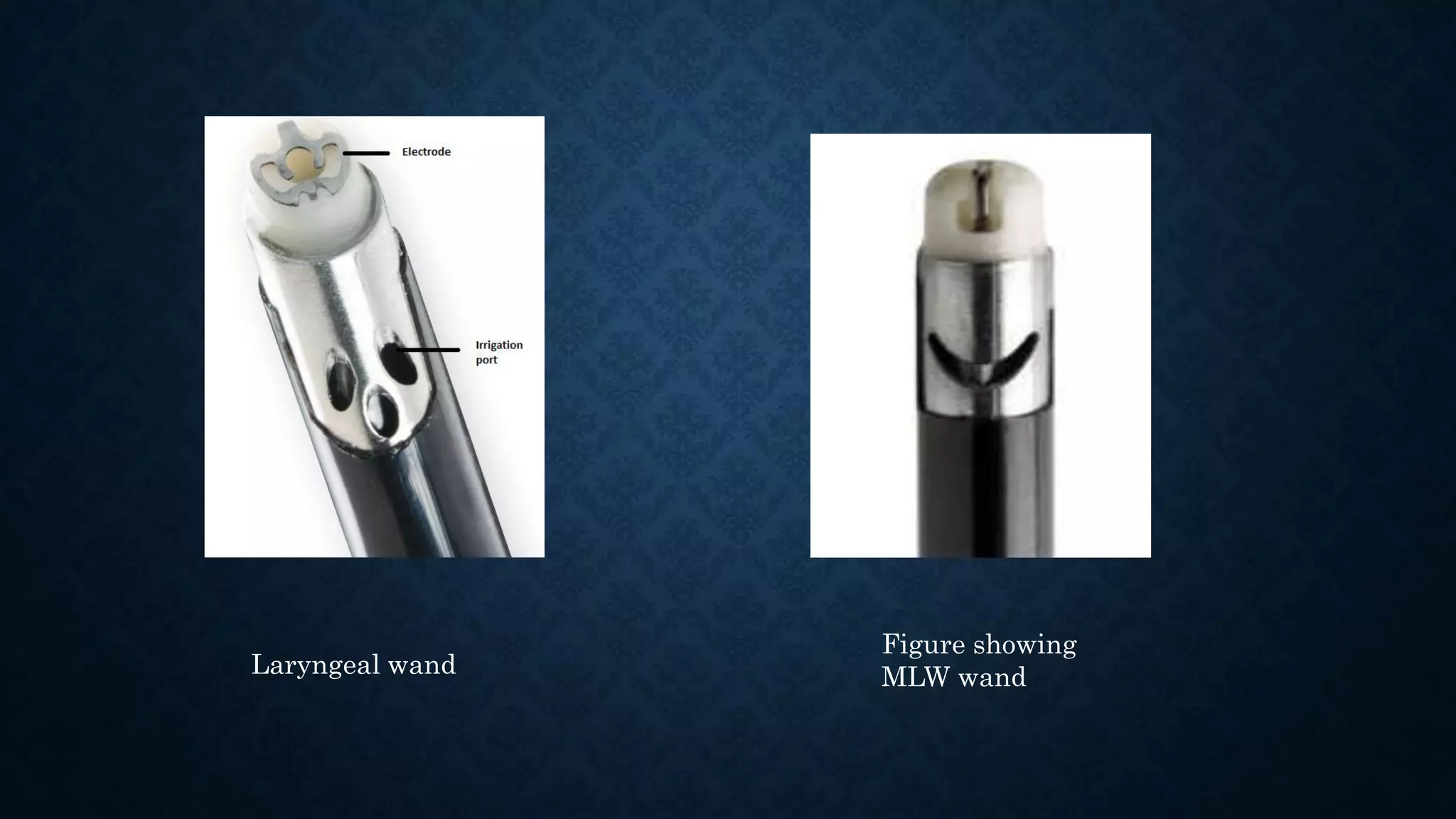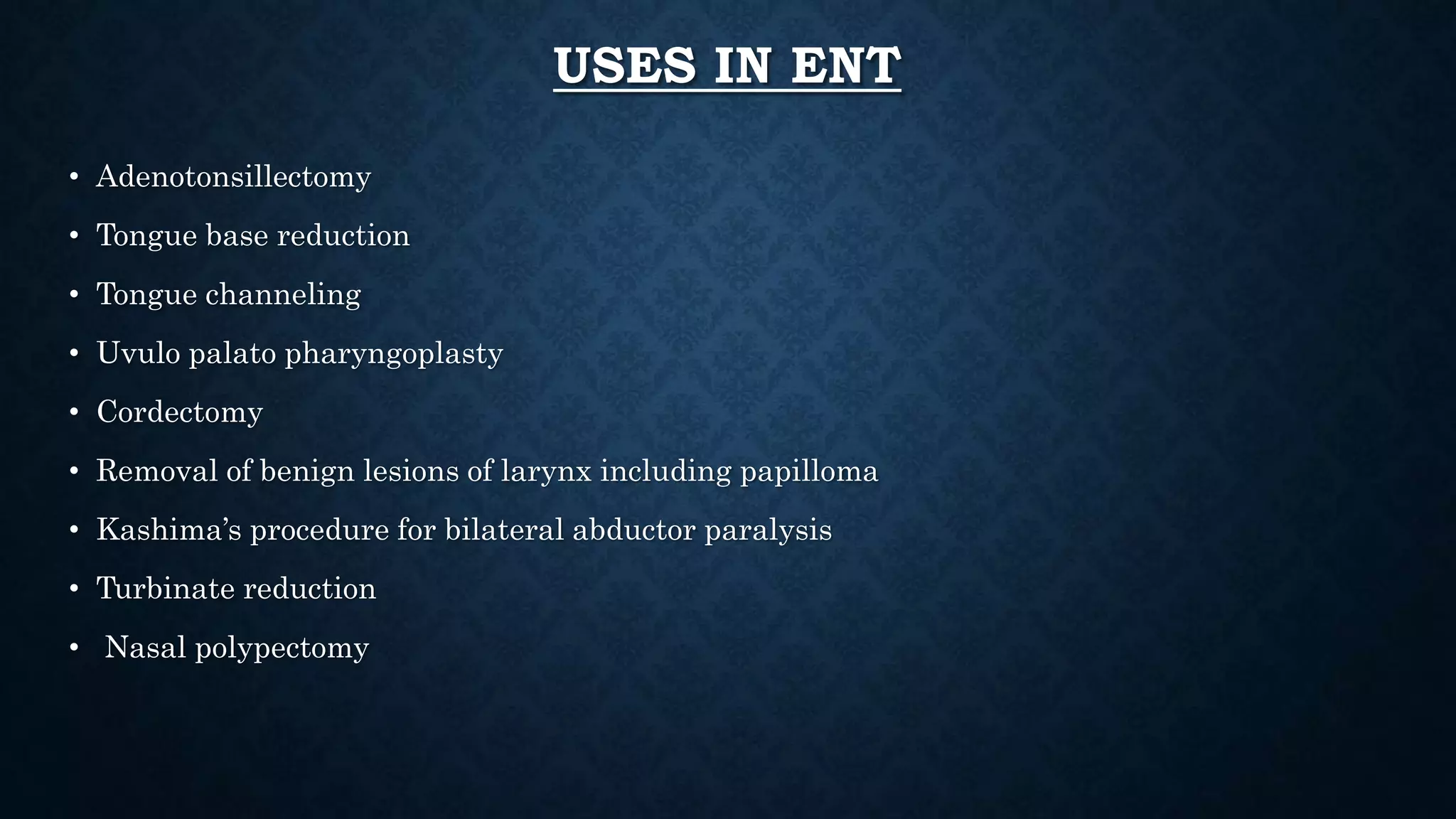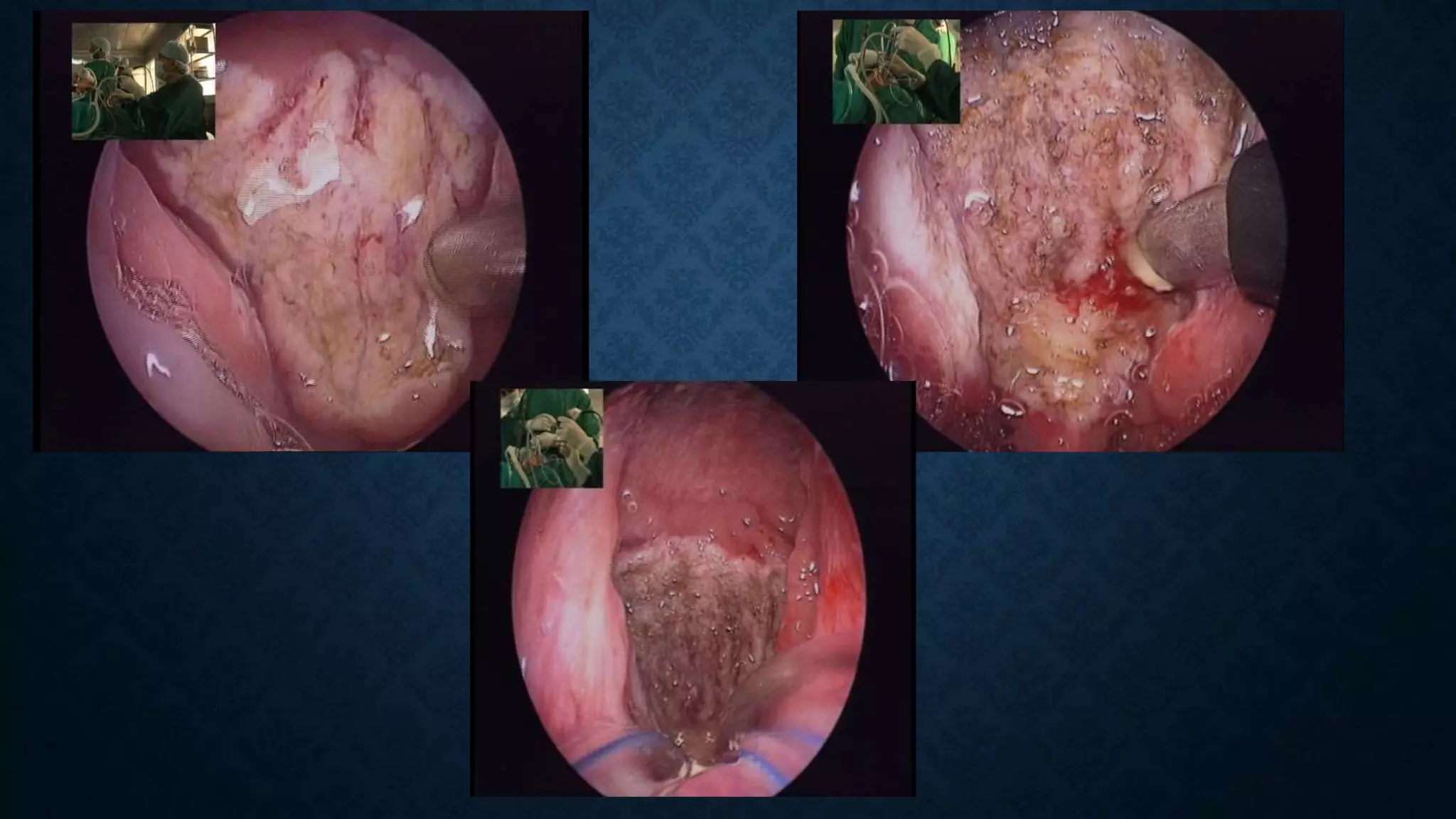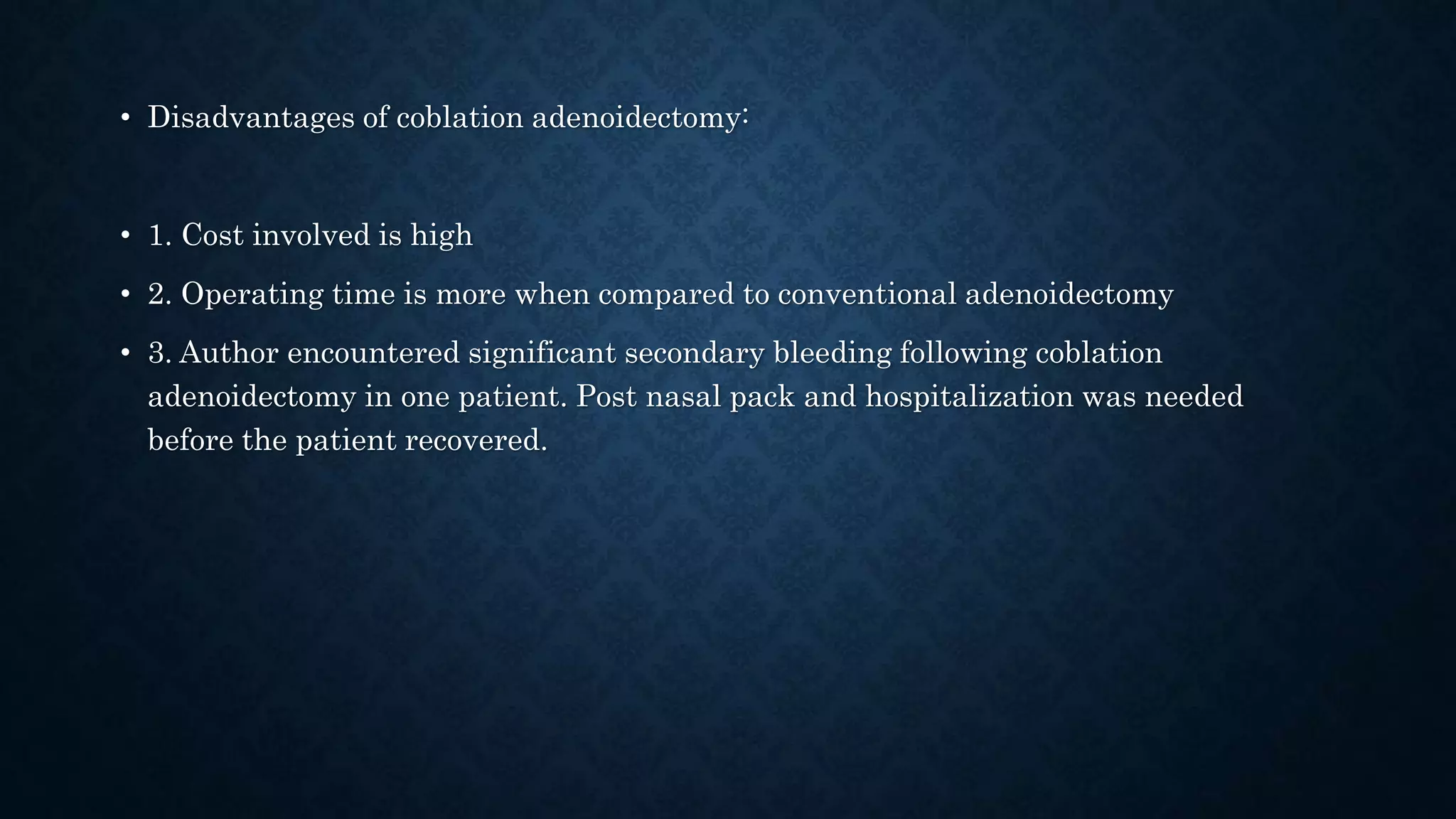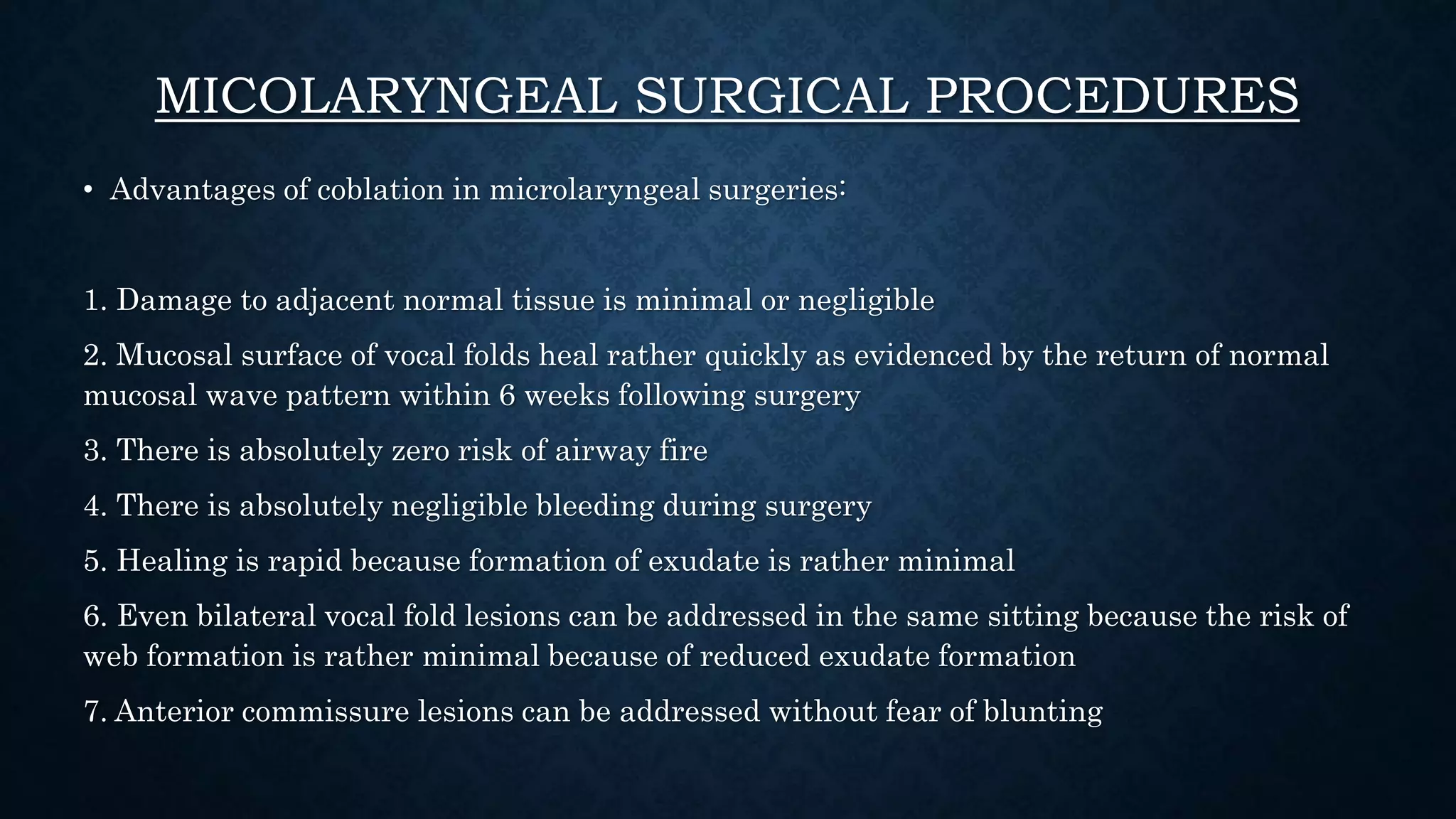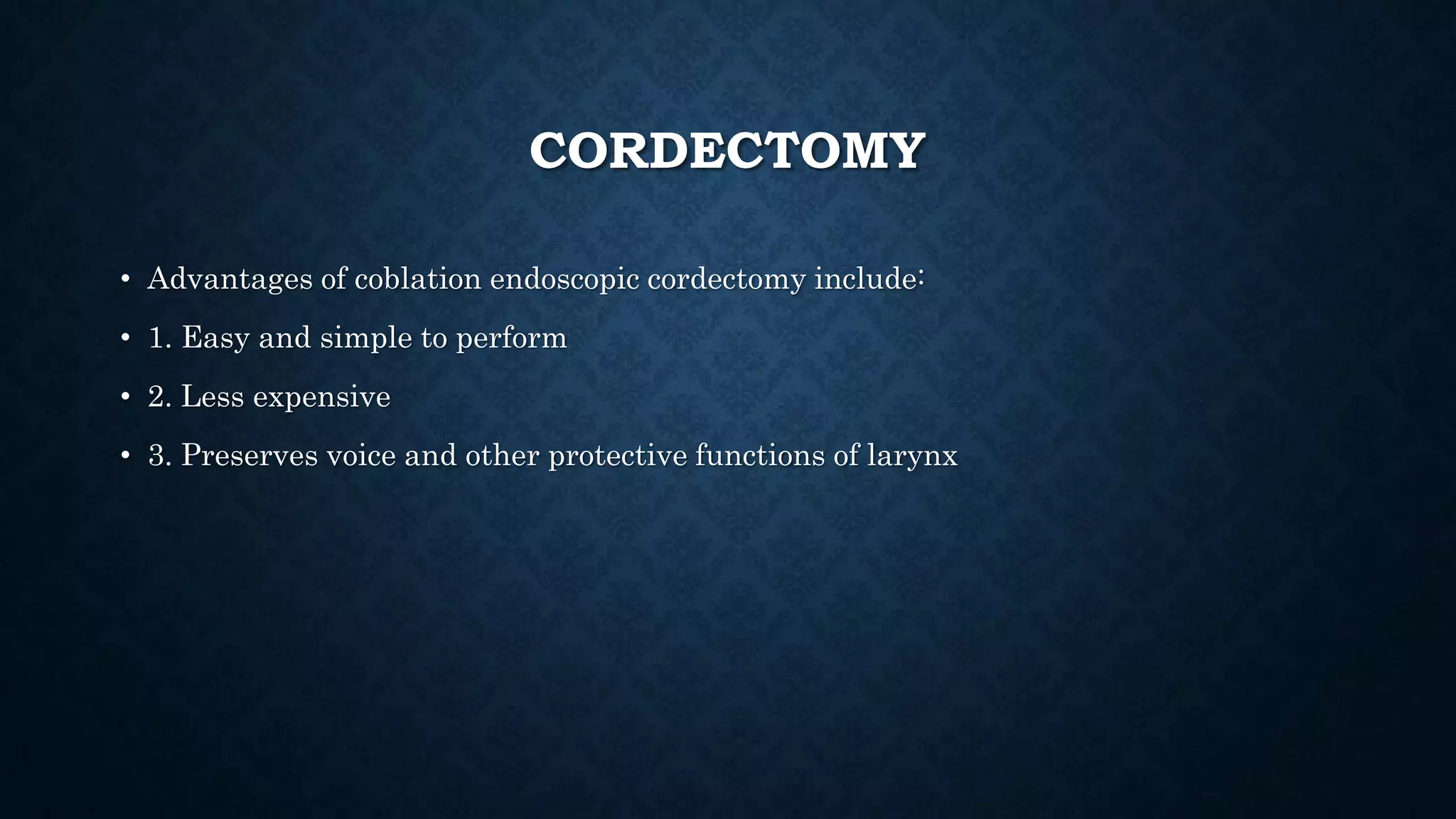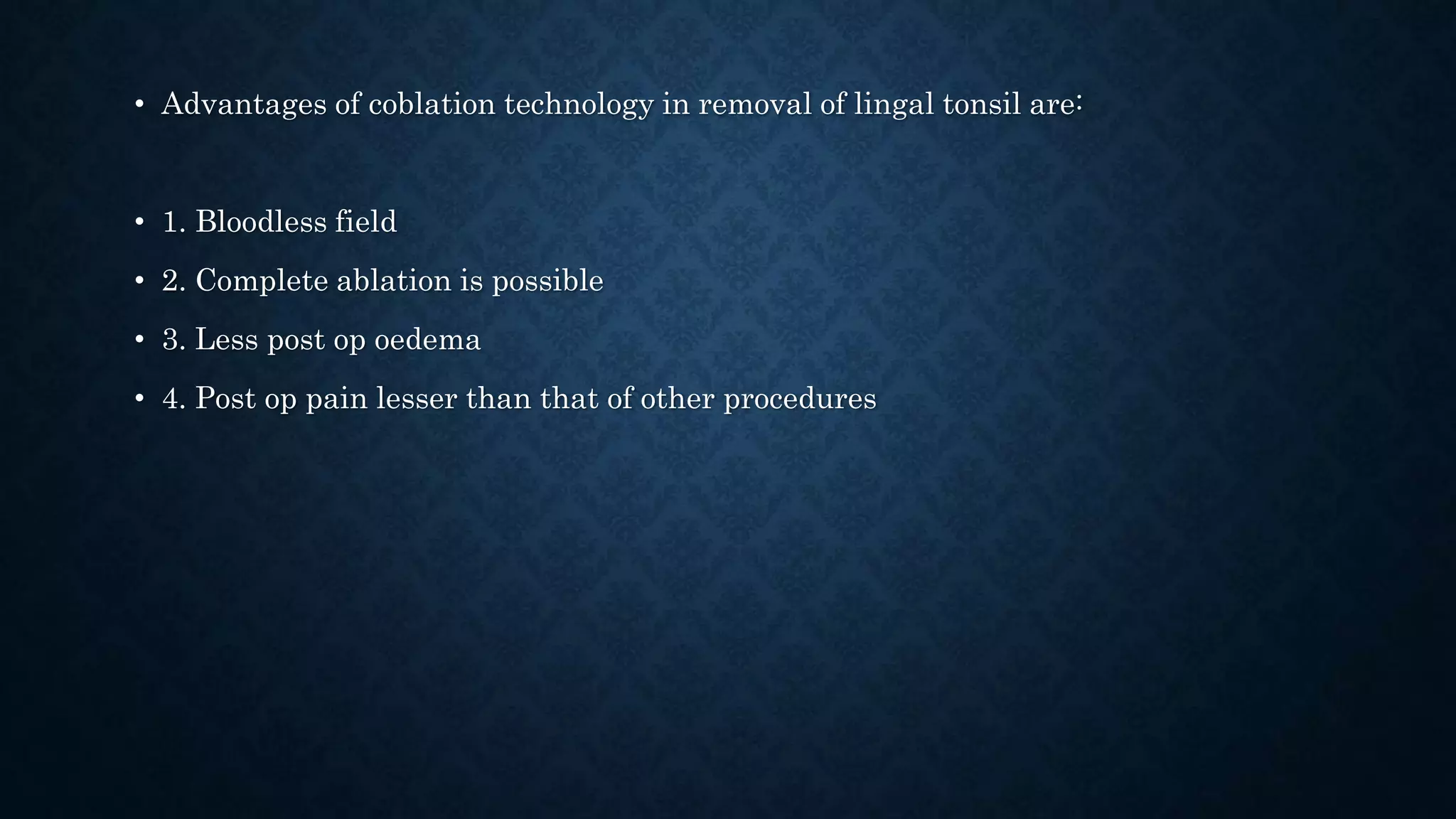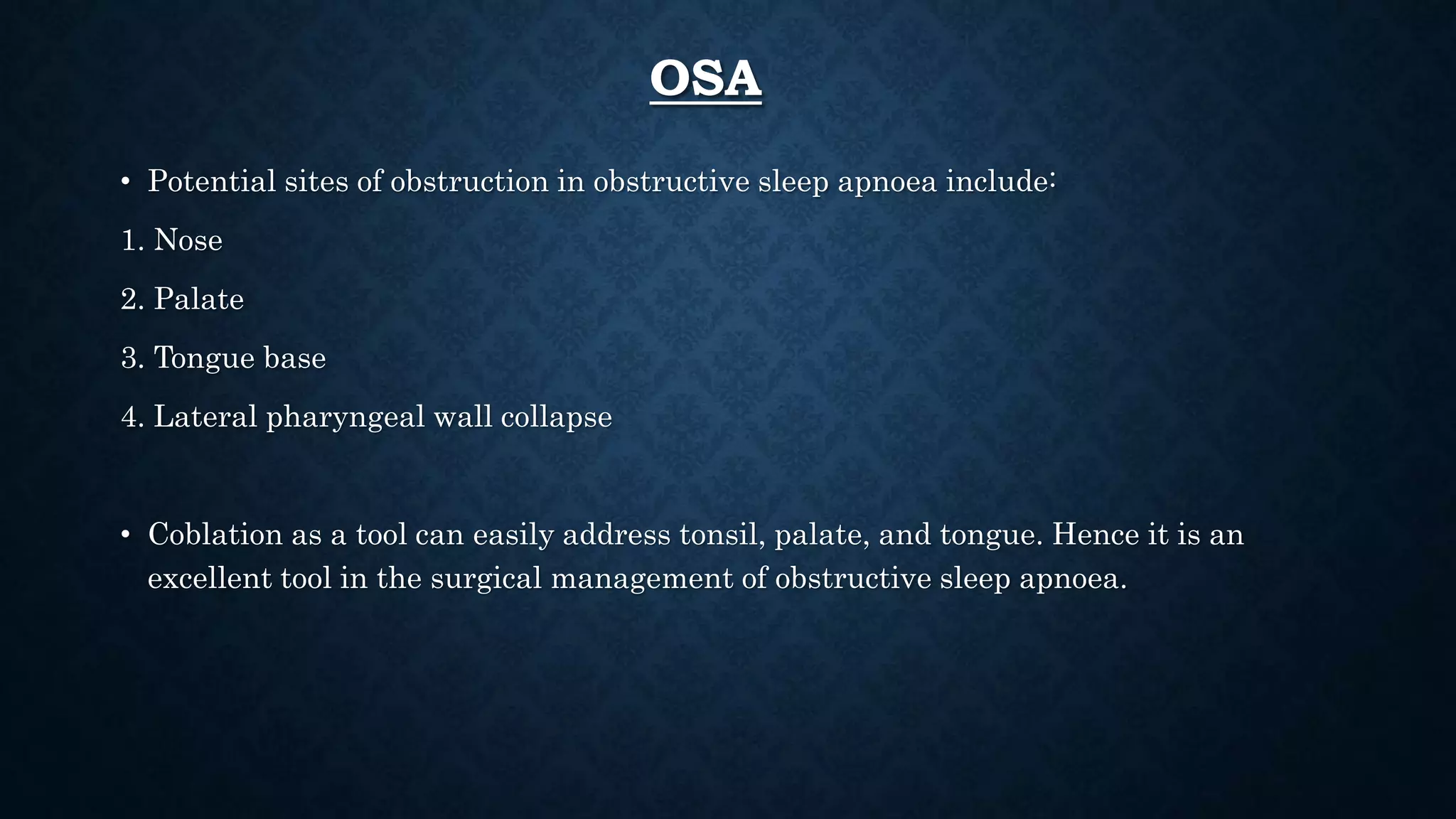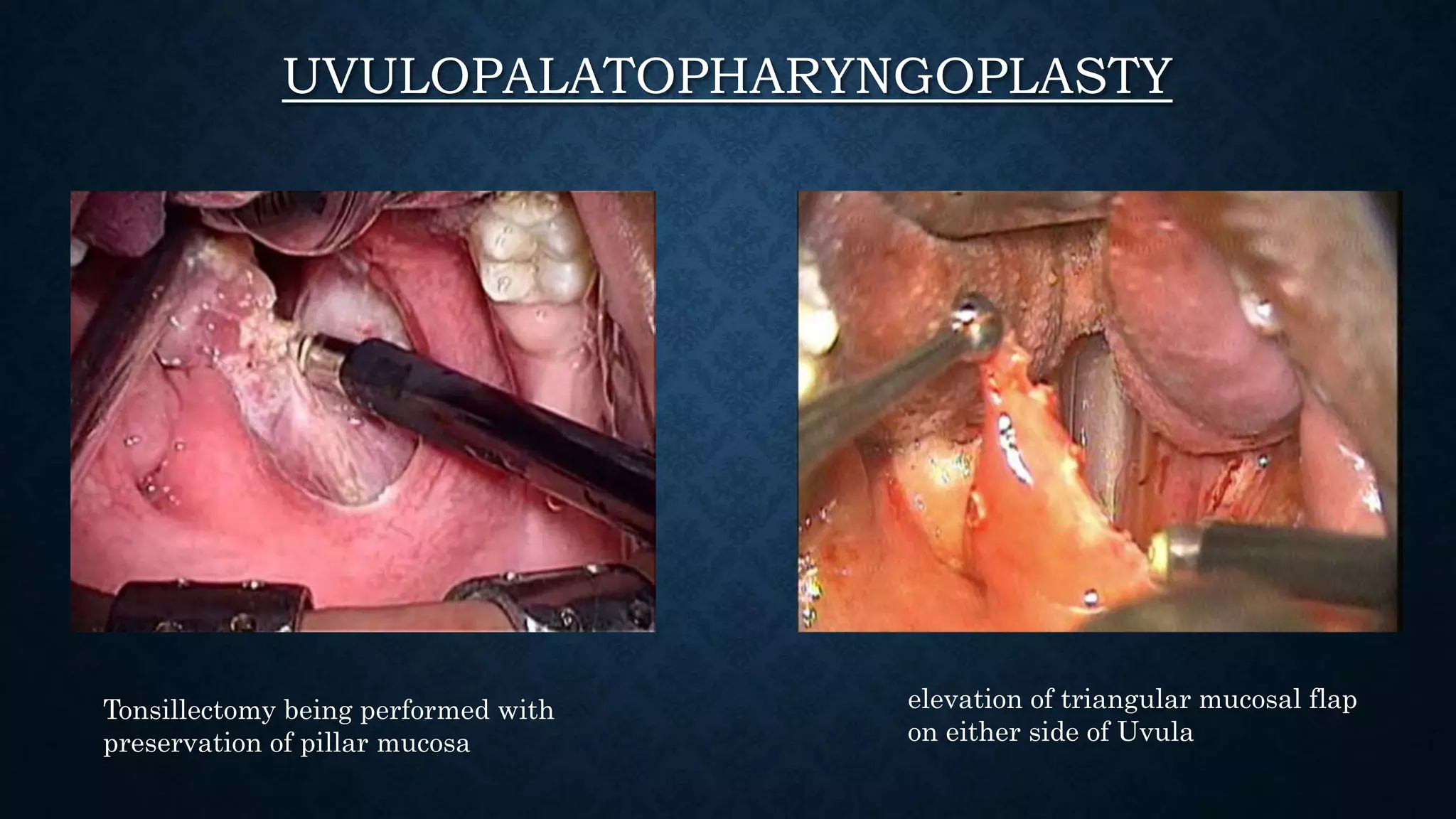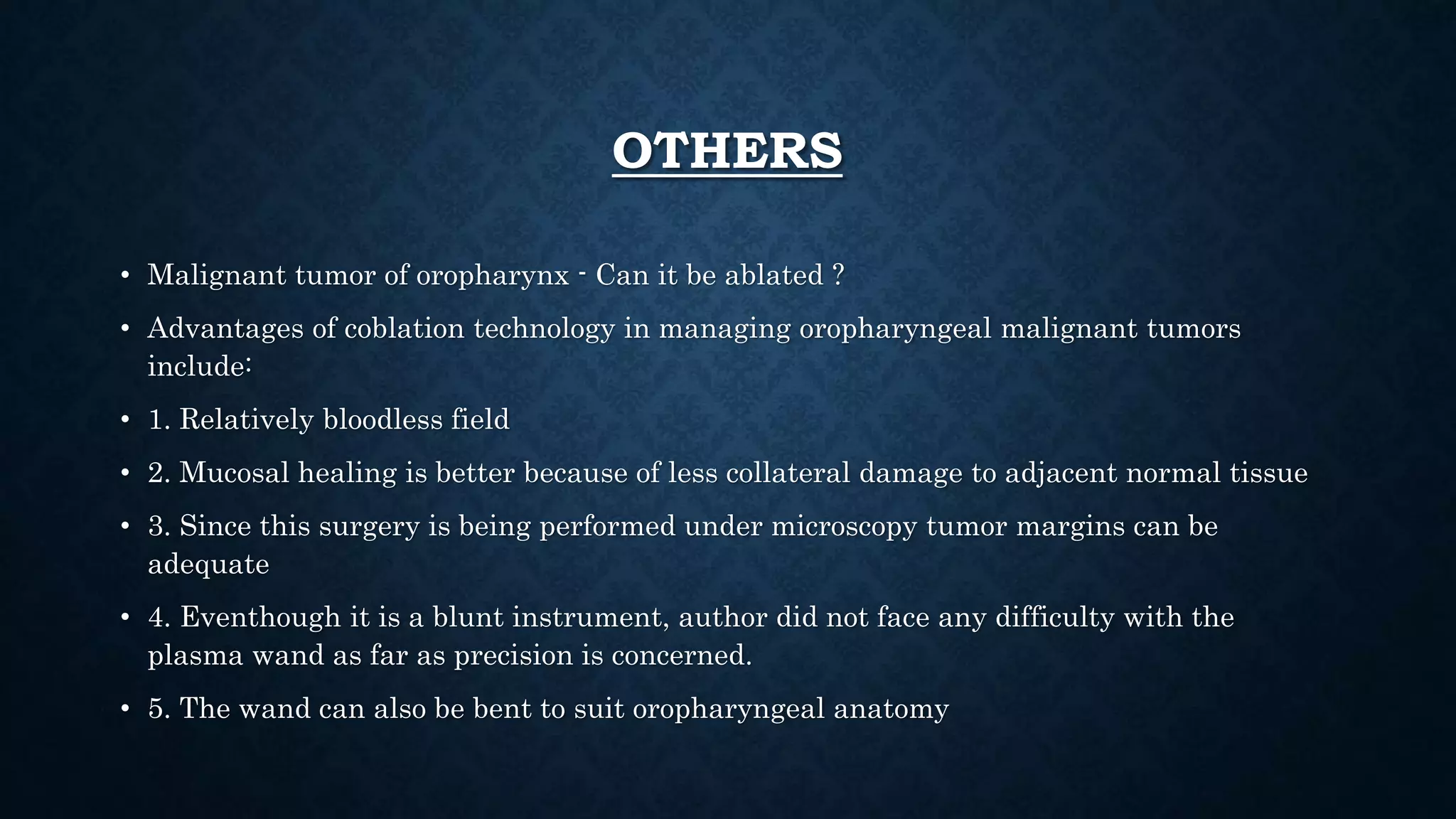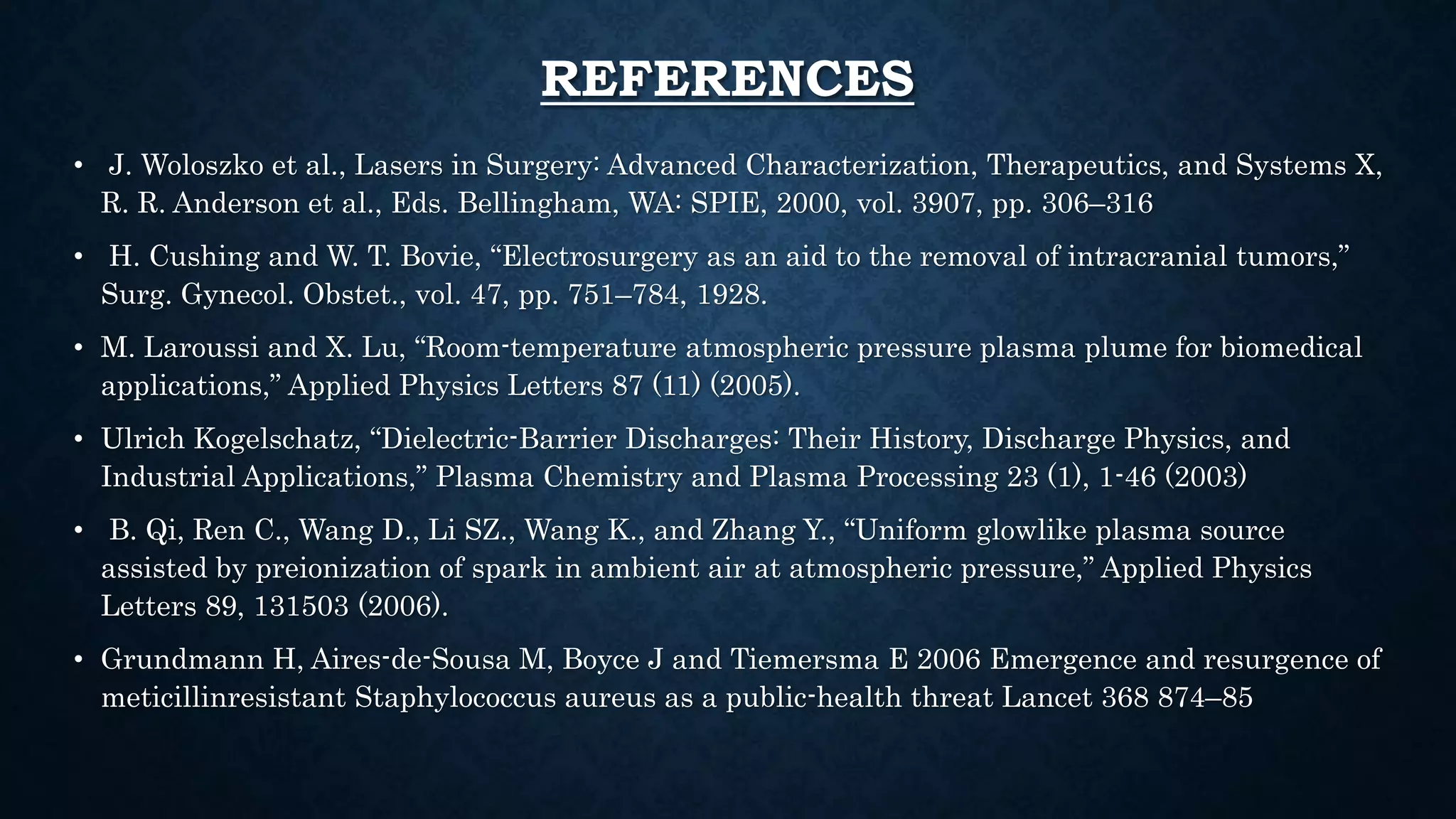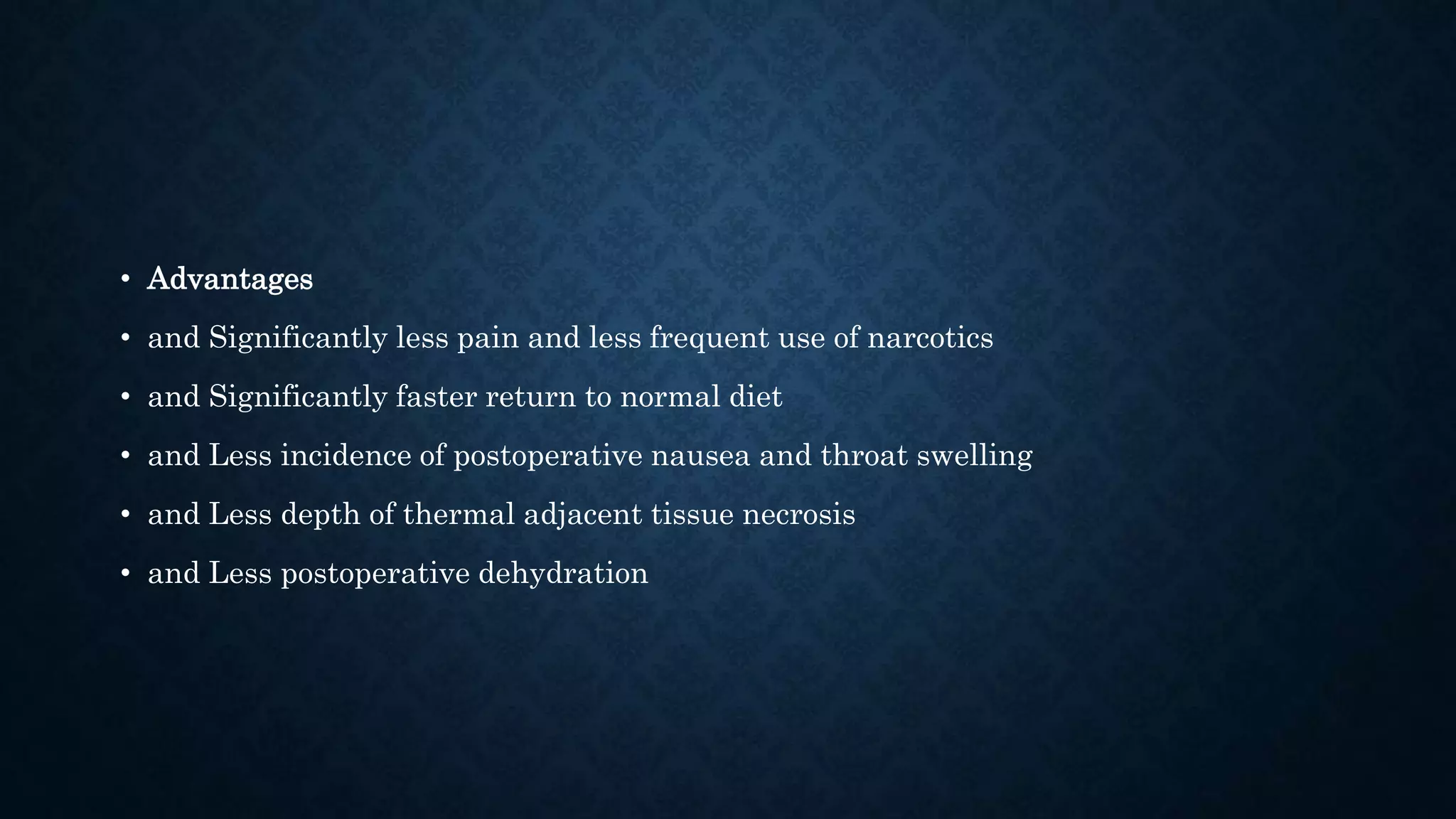Coblation is a non-thermal tissue ablation technique that uses radiofrequency energy and saline to generate a precise plasma field. This plasma field breaks down tissue molecules with minimal damage to surrounding structures. Coblation was developed in the 1990s and is commonly used in ENT procedures like tonsillectomy, adenoid removal, and turbinate reduction due to benefits like bloodless dissection, precision, and reduced pain. The coblation system includes a wand, RF generator, foot pedal, and saline irrigation. The wand's electrodes and saline generate a localized plasma field for tissue removal in ablation mode or hemostasis in coagulation mode.

